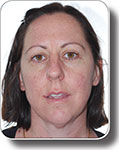Cyclone evacuation in the Timor Sea—a case study
Michelle Zaunbrecher A and Kerri Reeks BA Nexus Energy
B International Safety and Risk Management
The APPEA Journal 48(1) 43-52 https://doi.org/10.1071/AJ07005
Published: 2008
Abstract
Nexus Energy (Nexus) is the operator of the ACP23 permit in the Territory of Ashmore Cartier in the Timor Sea. The permit contains the Crux gas and condensate field. During March 2007, Nexus was undertaking drilling operations at the Crux field using the semi-submersible drilling rig Songa Venus, operated by Songa Drilling. Nexus utilised the Truscott Airbase to land fixed wing aircraft from Darwin, and then flew helicopters from Truscott out to the rig. An incident occurred as a result of failing to completely down-man the Songa Venus in the face of approaching Tropical Cyclone George. The National Offshore Petroleum Safety Authority (NOPSA) issued an Improvement Notice to Songa as the Rig Safety Case owner. Nexus was responsible for providing aviation transport and logistics. The evacuation planning allowed for a 12 hour buffer. Nonetheless, rapid changes in weather resulted in this buffer time being inadequate. On the morning of the planned final evacuation flight, the Bureau of Meteorology (BOM) issued a forecast of cloud base below the aviation alternate minima for Truscott (1,079 ft above ground level and 4.4 km visibility). The weather forecast of the cloud base minima being predicted to be below the aviation alternate minima invokes an aviation regulatory rule. This aviation regulatory rule requires that a suitable onshore alternate landing site is available before the helicopter is allowed to take off. The designated alternate landing point at Troughton Island was predicted to be similarly affected by weather and not suitable as an alternate landing point. The selected alternate landing site cannot then also require an alternate. Therefore, the helicopter was not able to take off and the flight to the rig was consequently aborted leaving 17 people onboard the rig.
Nexus has since dedicated significant effort and resources to rectifying the situation that occurred. Nexus plans to develop the Crux field and therefore must find a reliable solution for future cyclone evacuations. Nexus undertook an extensive review of regional alternate landing sites relevant to Truscott airbase and Crux. The most viable and reliable options for the Crux field were assessed as Cape Leveque and Kupang, West Timor.
Along with other technical solutions, Nexus has funded the upgrade of the existing Truscott BOM weather station facilities to an Automatic Weather Information System (AWIS), which will be operational for the 2007/08 cyclone season. The AWIS includes: a ceilometer that measures cloud base minima, a vis-meter that measures cloud cover, and an air pressure sensing pparatus (QNH). This information is measured and transmitted in real time to aviator operators. The documented height above the runway designated as the alternate minima is determined by the height of the surrounding terrain. The philosophy behind the lowering of the alternate level, when AWIS information is available, is based upon the flight crew being able to accurately set a known current QNH reading onto an altimeter sub scale, thus increasing altimeter integrity.
The improved weather measurement information has allowed for a 100 ft reduction in approach and alternate minima for the airbase. This is of potentially significant benefit given that the incident described in this paper was directly related to the inability of the helicopter to take off from Truscott due to restrictions on alternate minima. In addition, the installation of the AWIS will allow for more accurate weather forecasting for Truscott and the region.
A key outcome of the assessment undertaken was to improve the definition of the tasks that need to be undertaken for cyclone emergency planning, and clearly assign these tasks to positions in the emergency response team. The revised emergency response team is comprised of three key roles: cyclone evacuation coordinator; transport coordinator; and aviation technical advisor.
The cumulative effect of multiple operators working in the region needs to be assessed on an ongoing basis. Substantial improvements can be made to cyclone evacuation infrastructure and resources via an industry-wide approach.

Michelle Zaunbrecher is Nexus Energy’s health, safety, environment and community (HSEC) manager. Prior to this position she worked for BP on the Baku-Tbilisi-Ceyhan pipeline project based in Georgia, Azerbaijan and Turkey. Michelle was the environmental management systems manager for BHP Corporate, and was also employed by BHP for 13 years in various HSEC roles. Michelle has a Bachelor of Applied Science (Geology), Honors Degree (Petroleum Geology and Geophysics; University of Adelaide), and Master of Science (Environment and Hydrogeology; University of Melbourne). mzaunbrecher@nxs.com.au |

Kerri Reeks is a director and principal consultant for International Safety and Risk Management (ISRM) and has been involved in the global oil drilling industry since 1975. Kerri has a number of qualifications including a Graduate Diploma in Emergency Management from Swinburne. He has extensive experience in both onshore and offshore exploration, safety management in drilling and production, international oil spill response as well as emergency and crisis management. Prior to his current role, Kerri was the (east coast) General Manager of Worley Safety and Risk Management based in Melbourne. kerri@isrm.com.au |


